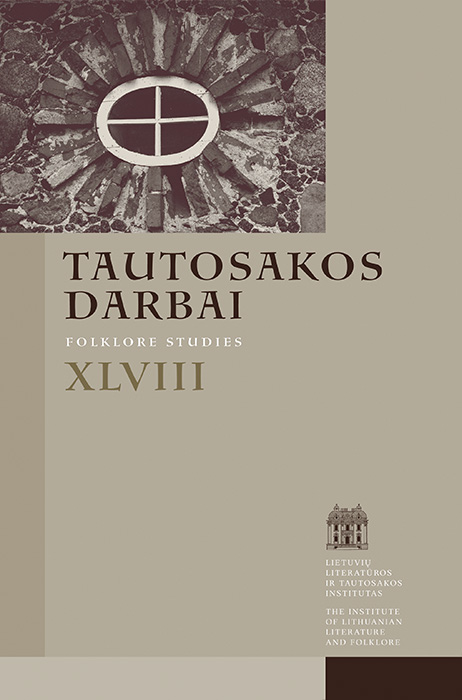Kai kurie mitinio varlės įprasminimo aspektai tradicinėje lietuvių pasaulėjautoje
Santrauka
Straipsnyje, pasiremiant lietuvių tikėjimais ir papročiais, siekiama atskleisti keletą varlės mitinio įvaizdžio prasmių. Tradiciniame pasaulėvaizdyje ryškėja varlės kaip vandens kaupėjos, gydomųjų galių turinčio gyvio, žmogaus zoomorfinio pavidalo kūno dalies ar svetimkūnio, vienos iš žmogaus fizinės ir socialinės raidos fazių, grėsmę keliančios vandens mitinės būtybės įsivaizdavimas. Tokiam varlės mitiniam įprasminimui didelę reikšmę turi jos biologinės ir ekologinės savybės, jų įtaka jutiminei žmonių patirčiai.
Atsisiuntimai
Nėra atsisiuntimų.
Skaitomiausi šio autoriaus(ų) straipsniai
- Vita Džekčioriūtė, Bauginantys, žiaurūs ir smurtiniai motyvai tradicinėse lietuvių lopšinėse , Tautosakos darbai: T 65 (2023): Tautosakos darbai
- Vita Džekčioriūtė, A Polish Sourcebook on the Living Dead , Tautosakos darbai: T 66 (2023): Tautosakos darbai
- Vita Džekčioriūtė, Aušra Žičkienė, Jūratė Šlekonytė, Gražina Kadžytė, Jurgita Ūsaitytė, Lina Būgienė, Daiva Vyčinienė, Kronika , Tautosakos darbai: T 48 (2014)
- Radvilė Racėnaitė, Vita Džekčioriūtė, Pratarmė , Tautosakos darbai: T 66 (2023): Tautosakos darbai
- Radvilė Racėnaitė, Vita Džekčioriūtė, Pratarmė , Tautosakos darbai: T 67 (2024): Tautosakos darbai
